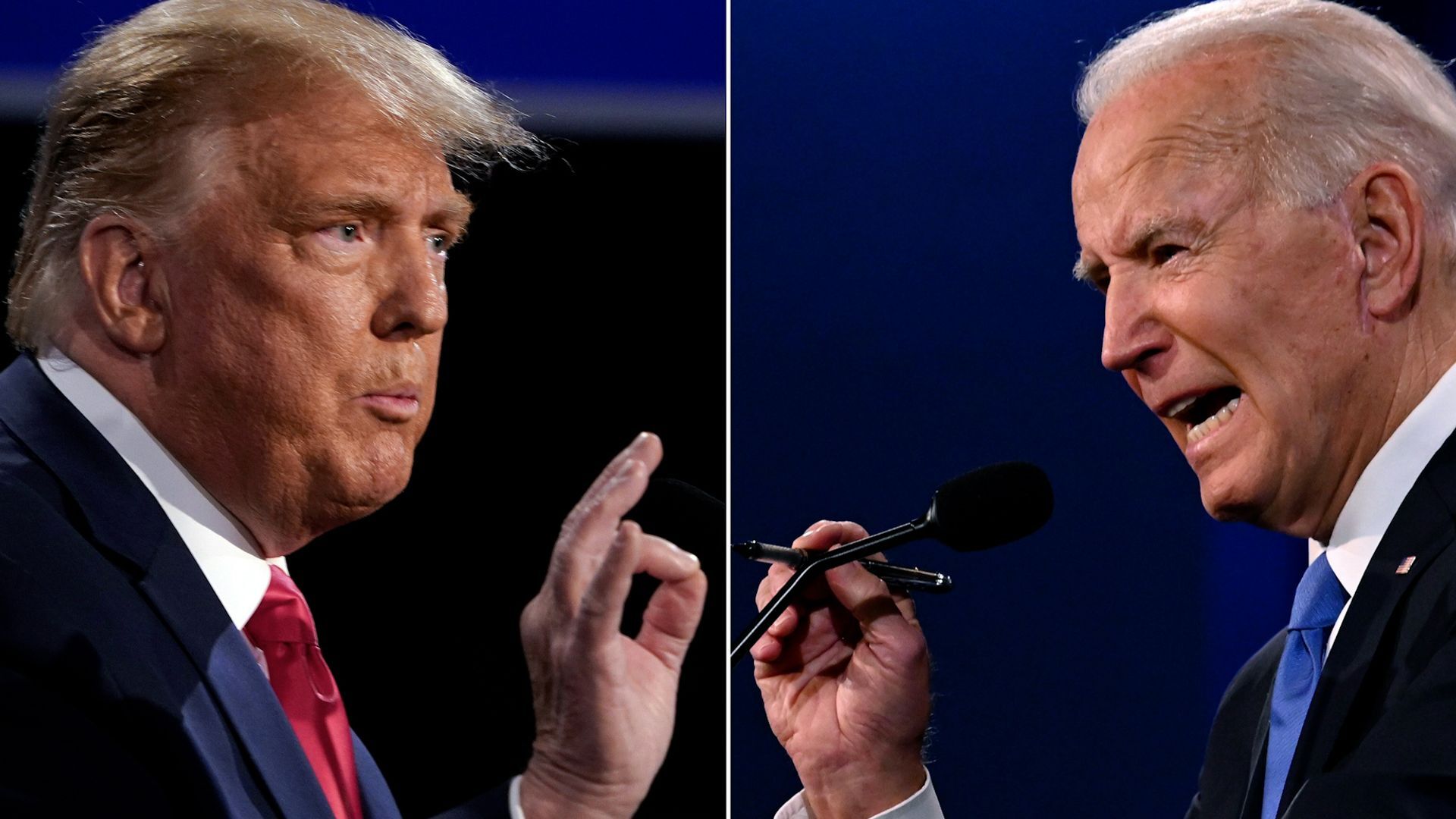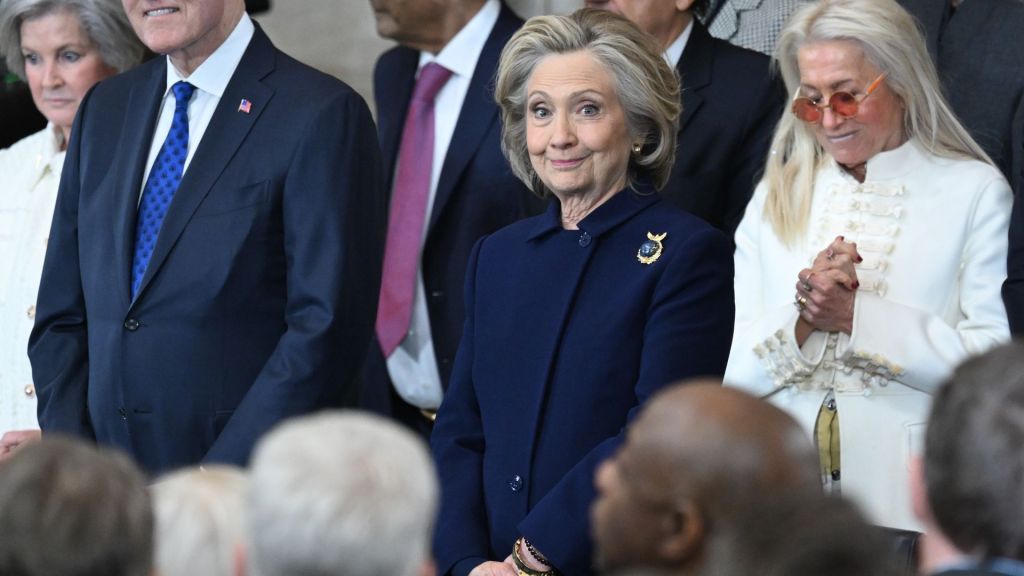
At $31.4 trillion, the national debt is the subject of a showdown between the White House and House Republicans. Unless Congress raises the debt ceiling, the U.S. is at risk of defaulting on its debt, which would have catastrophic consequences.
House Republicans have proposed raising the debt ceiling into 2024 in exchange for spending cuts, but Democrats are pushing for a clean debt ceiling hike. While Republican leadership insists spending is out of control under the Biden administration, history shows Republican administrations are also guilty of running huge deficits.
The national debt first started rolling under Democrat Franklin D. Roosevelt. The debt went up over 1,000% during his 12 years in office before he died. He had taken over the presidency in the depths of the Great Depression, purposefully engineered a debt default, and between the New Deal and World War II, spent a lot of money.
By the end of his term, the national debt had jumped to around a quarter of a trillion dollars, which equals about $4 trillion today. But how did the country go from that to $31.4 trillion in 2023? It’s quite the bipartisan effort.
President Harry Truman, D, FY 1946-1953
- Debt rose $7.4 billion in eight years, up 2.86%.
- Truman kept the debt pretty steady over his eight years. He did have the Korean War on his books, but after heavy spending by his predecessor, overall the national debt went up less than 3% on Truman’s watch.
President Dwight Eisenhower, R, FY 1954-1961
- Debt rose $22.9 billion in eight years, up 8.61%.
- Eisenhower faced multiple recessions during his time in office, worked with Democrats in Congress to try to curb spending and left office in 1961 with a warning for the nation:
“We cannot mortgage the material assets of our grandchildren without risking the loss also of their political and spiritual heritage. We want democracy to survive for all generations to come, not to become the insolvent phantom of tomorrow,” Eisenhower said.
Presidents John Kennedy and Lyndon Johnson, D, FY 1962-1969
- Debt rose $64.7 billion between the two presidents, up 22.41% in eight years.
- John F. Kennedy increased the debt by nearly 8% in three years. Worried about his slim margin of victory and what it would mean for reelection, he proposed tax cuts that were eventually signed.
- In five years, Lyndon B. Johnson tacked on another 13% to the debt. By his tenure, the U.S. had gotten involved in Vietnam. The total U.S. military cost of the war came to $111 billion, which is around $1 trillion in today’s dollars.
Presidents Richard Nixon and Gerald Ford, R, FY 1970-1977
- Debt rose $345.1 billion between the two presidents, up 97.57%.
- Between Republicans Nixon and Ford, the national debt doubled in eight years’ time. The administration was plagued with soaring inflation.
- Nixon implemented wage and price controls in the early ’70s that turned disastrous once lifted.
- When Ford took over, his economy was marred with stagflation, where high inflation meets high unemployment.
President Jimmy Carter, D, FY 1978-1981
- Debt rose $299 billion, up 42.79% in one term.
- Democrat Jimmy Carter took the reins with a unified Congress behind him and the national debt went up another 43% in four years. Despite claims his budgets were “lean and tight,” the government repeatedly underestimated the cost of doing business amid skyrocketing inflation and soaring interest rates.
- Carter never achieved the balanced budget he desired and though inflation started to come down, the country soon entered a recession.
President Ronald Reagan, R, FY 1982-1989
- Debt rose $1.86 trillion, up 186.36% in eight years.
- The national debt breached $1 trillion during Reagan’s presidency. The Reaganomics era included two major rounds of tax cuts in the name of economic recovery, but revenues took a hit.
- Reagan also increased defense spending, pushing debt up 186% during his time in office.
President George H.W. Bush, R, FY 1990-1993
- Debt rose $1.55 trillion, up 54.39% in four years.
- Bush tried tackling the deficit he inherited, but with Democrats controlling Congress, they refused to cap spending without raising taxes. Bush conceded and did so, which likely cost him a second term.
- Voters remembered the broken campaign promise he made in 1988: “Read my lips, no new taxes,” he infamously said.
President Bill Clinton, D, FY 1994-2001
- Debt rose $1.4 trillion, up 31.64% in eight years.
- Bill Clinton took Bush’s spending cap plan and ran with it. The debt went up slightly less in two terms than his predecessor’s one.
- Clinton famously balanced his last four budgets while in office during a time of economic prosperity. Those years of surplus are the last the U.S. has seen.
- When Clinton left office, the debt stood at less than $6 trillion.
President George W. Bush, R, FY 2002-2009
- Debt rose $6.1 trillion, up 105.1% in two terms.
- The national debt more than doubled under the younger Bush. He came in and quickly cut taxes but then spending ballooned with wars in Iraq and Afghanistan.
- The 2008 financial crash capped off his two terms with a $700 billion bank bailout.
President Barack Obama, D, FY 2010-2017
- Debt rose $8.33 trillion, up 70% in eight years.
- Obama came into office under the Great Recession that started under Bush. The American Recovery and Reinvestment Act he passed cost hundreds of billions of dollars. Obama’s Affordable Care Act had an equally-expensive price tag.
- Obama faced two debt-ceiling crises during his terms.
President Donald Trump, R, FY 2018-2021
- Debt rose $8.18 trillion, up 40.43% in four years.
- In four years, Trump added nearly as much debt as Obama did in eight.
- Trump’s tax cuts and defense spending had figures soaring even before the pandemic, with costly COVID relief also on his watch.
President Joe Biden, D, FY 2022
- Debt rose $2.5 trillion, up 8.79% his first fiscal year.
- In a short amount of time, Biden has tacked on some trillions. The American Rescue Plan and $1 trillion infrastructure bill passed under his administration.
That’s how the U.S. ballooned to $31.4 trillion in debt. High interest rates are causing the cost of that debt to also soar at the moment. For decades now, every presidential administration is guilty of running a deficit and those deficits add up.
While the math Straight Arrow News used attaches debt accumulation to the president who passed the budgets those fiscal years, Congress and compromise are often at play. Also, the cost — or benefit — of a policy that passes one year can ripple on for decades to come.
SIMONE DEL ROSARIO: WHEN IT COMES TO THE NATIONAL DEBT, FDR IS PROBABLY THE KING. THE NATIONAL DEBT WENT UP OVER A THOUSAND PERCENT DURING HIS 12 YEARS IN OFFICE BEFORE HE DIED. HE TOOK OVER THE PRESIDENCY IN THE DEPTHS OF THE GREAT DEPRESSION, PURPOSEFULLY ENGINEERED A DEBT DEFAULT, AND BETWEEN THE NEW DEAL AND WORLD WAR TWO, SPENT A LOT.
BY THE END OF HIS TERM, THE NATIONAL DEBT HAD JUMPED UP TO AROUND A QUARTER OF A TRILLION DOLLARS, WHICH EQUALS ABOUT FOUR TRILLION IN TODAY’S TIME.
BUT HOW DID THE COUNTRY GO FROM THAT TO 31.4 TRILLION? IT’S QUITE THE BIPARTISAN EFFORT, LET’S TAKE A LOOK AT THE PILE ON.
DEMOCRAT, PRESIDENT HARRY TRUMAN KEPT THE DEBT PRETTY STEADY IN HIS EIGHT YEARS. HE DID HAVE THE KOREAN WAR ON HIS BOOKS BUT OVERALL THE DEBT WENT UP LESS THAN 3% ON HIS 8-YEAR WATCH.
UNDER REPUBLICAN PRESIDENT DWIGHT EISENHOWER, DEBT ROSE ANOTHER 8.6% IN 8 YEARS. HE FACED MULTIPLE RECESSIONS, WORKED WITH DEMOCRATS IN CONGRESS TO TRY TO CURB SPENDING, AND LEFT OFFICE WITH THIS WARNING:
PRESIDENT EISENHOWER: We cannot mortgage the material assets of our grandchildren without risking the loss also of their political and spiritual heritage. We want democracy to survive for all generations to come, not to become the insolvent phantom of tomorrow.
SIMONE DEL ROSARIO: JFK INCREASED THE DEBT BY NEARLY 8% IN 3 YEARS. PRETTY WORRIED ABOUT HIS SLIM MARGIN OF VICTORY, HE PROPOSED TAX CUTS THAT WERE EVENTUALLY SIGNED BY HIS SUCCESSOR. AND IN 5 YEARS, LBJ TACKED ON ANOTHER 13% TO THE DEBT. BY THEN THE U-S HAD GOTTEN INVOLVED IN VIETNAM, WHERE THE TOTAL U-S MILITARY COST CAME TO $111 BILLION, AROUND A TRILLION IN TODAY’S DOLLARS.
BETWEEN REPUBLICANS NIXON AND FORD, THE NATIONAL DEBT DOUBLED IN EIGHT YEARS’ TIME. THE ADMINISTRATION WAS PLAGUED WITH SOARING INFLATION. NIXON IMPLEMENTED WAGE AND PRICE CONTROLS, WHICH TURNED DISASTROUS ONCE LIFTED. AND HIS SUCCESSOR GERALD FORD’S ECONOMY WAS MARRED WITH STAGFLATION; WHERE HIGH INFLATION MEETS HIGH UNEMPLOYMENT.
DEMOCRAT JIMMY CARTER TOOK THE REINS WITH A UNIFIED CONGRESS BEHIND HIM, AND TACKED ON A 43% DEBT INCREASE IN FOUR YEARS. DESPITE CLAIMS HIS BUDGETS WERE “LEAN AND TIGHT,” THE GOVERNMENT REPEATEDLY UNDERESTIMATED THE COST OF DOING BUSINESS AMID SKYROCKETING INFLATION AND SOARING INTEREST RATES. HE NEVER ACHIEVED THE BALANCED BUDGET HE DESIRED, AND THOUGH INFLATION STARTED TO COME DOWN THE COUNTRY SOON ENTERED ANOTHER RECESSION IN CARTER’S SINGLE TERM.
THAT’S WHERE REPUBLICAN RONALD REAGAN TAKES OVER…AND THE NATIONAL DEBT BREACHES A TRILLION DOLLARS. THE REAGANOMICS ERA INCLUDED TWO MAJOR ROUNDS OF TAX CUTS IN THE NAME OF ECONOMIC RECOVERY, BUT REVENUES TOOK A BIG HIT. HE ALSO INCREASED DEFENSE SPENDING, PUSHING THE DEBT UP 186% IN HIS EIGHT YEARS.
PRESIDENT GEORGE H.W. BUSH: Congress will push me to raise taxes and i’ll say no, and they’ll push and i’ll say no, and they’ll push again and i’ll say to them read my lips no new taxes.
SIMONE DEL ROSARIO: UNDER GEORGE H.W. BUSH, THE NATIONAL DEBT WENT UP ANOTHER 54% IN A SINGLE TERM. BUSH TRIED TACKLING THE DEFICIT HE INHERITED, BUT WITH DEMOCRATS CONTROLLING CONGRESS, THEY REFUSED TO CAP SPENDING WITHOUT RAISING TAXES… A CONCESSION AND BROKEN CAMPAIGN PROMISE THAT LIKELY COST HIM A SECOND TERM.
BILL CLINTON TOOK BUSH’S PLAN AND RAN WITH IT. THE DEBT WENT UP SLIGHTLY LESS IN TWO TERMS THAN HIS PREDECESSOR’S ONE. CLINTON FAMOUSLY BALANCED HIS LAST FOUR BUDGETS WHILE IN OFFICE DURING A TIME OF ECONOMIC PROSPERITY. THOSE YEARS OF SURPLUS ARE THIS COUNTRY’S LAST. THE DEBT STANDS AT LESS THAN SIX TRILLION.
THE NATIONAL DEBT MORE THAN DOUBLED DURING GEORGE W. BUSH’S TIME IN OFFICE. HE CAME IN AND QUICKLY CUT TAXES, BUT THEN SPENDING BALLOONED WITH THE WARS IN IRAQ AND AFGHANISTAN, AND THEN THE 2008 FINANCIAL CRASH CAPPED OFF HIS TERMS WITH A $700 BILLION DOLLAR BANK BAILOUT.
BUDGETS UNDER BARACK OBAMA ADDED ANOTHER 70% TO THE DEBT. COMING INTO OFFICE UNDER THE GREAT RECESSION, THE AMERICAN RECOVERY AND REINVESTMENT ACT ALONE COST HUNDREDS OF BILLIONS OF DOLLARS. HIS AFFORDABLE CARE ACT HAD AN EQUALLY EXPENSIVE PRICE TAG. OBAMA FACED TWO DEBT CEILING CRISES DURING HIS TERMS.
IN FOUR YEARS, DONALD TRUMP ADDED NEARLY AS MUCH DEBT AS OBAMA DID IN EIGHT. THE NATIONAL DEBT RISES ANOTHER 40%. TRUMP’S TAX CUTS AND DEFENSE SPENDING HAD FIGURES SOARING EVEN BEFORE THE PANDEMIC, WITH COSTLY COVID RELIEF ALSO ON HIS WATCH.
IN A SHORT AMOUNT OF TIME, JOE BIDEN HAS TACKED ON SOME TRILLIONS…THE AMERICAN RESCUE PLAN AND TRILLION DOLLAR INFRASTRUCTURE BILL ON HIS PLATE. BUT NOW, HE’S AT ANOTHER CEILING, AND THE DEBT STANDS AT 31.4.
SO THAT’S HOW IT ALL BALLOONED. FOR DECADES NOW, EVERY PRESIDENT’S BEEN GUILTY OF RUNNING A DEFICIT. AND THOSE DEFICITS ADD UP.
HERE ARE THE ANNUAL BUDGETS. IT MIGHT SURPRISE YOU TO SEE THAT SOME OF THESE BIGGER DEFICITS ARE HAPPENING UNDER REPUBLICAN ADMINISTRATIONS. BUT AS WE’VE JUST WALKED YOU THROUGH, YOU CAN PICK OUT SOME OF THE CRISES THAT HAPPENED THAT LED TO SOME OF THESE SPIKES.
AND WHILE WE ATTACH DEBT ACCUMULATION TO THE PRESIDENT THAT PASSED THE BUDGETS THOSE YEARS, WE KNOW THAT CONGRESS AND COMPROMISE ARE AT PLAY. AND THAT THE COST – OR BENEFIT – OF A POLICY THAT PASSES ONE YEAR, CAN RIPPLE ON FOR DECADES TO COME.










